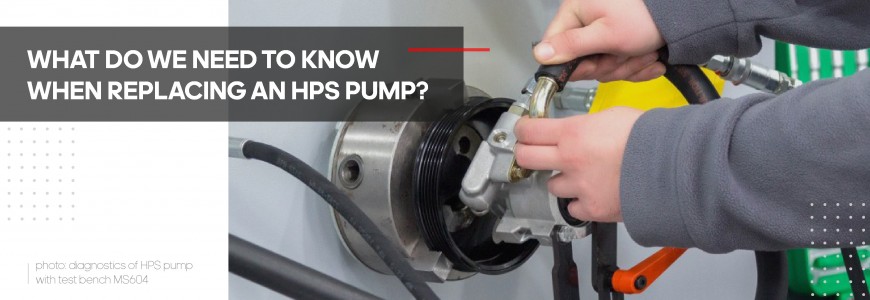
Power steering, as well as other auxiliary units of a vehicle, enhances the comfort of driving. Hydraulic power steering is a reliable and durable system - still, failures happen.
Here are some symptoms of an HPS system failure:
- each turn of the wheel is accompanied by intense noise or squealing;
- either stiff or loose wheel;
- poor vehicle handling
Quite often, this behavior is caused by a faulty HPS pump. It should be noted that repairable rotary vane pumps used in present-day vehicles are reliable and almost ageless when duly maintained. However, in some cases, even these pumps cannot be repaired, that's when they have to be replaced.
How to replace a pump without damaging the system?
Some simple rules should be followed to ensure a trouble-free operation of the system after the pump replacement.
1. If you decided to install a used HPS pump, remember that the units of this kind can be different. There are five groups of used units: remanufactured, rebuilt, reconditioned, repaired, used. The pumps belonging to the first two groups can be considered reliable. Remanufactured is the unit having old housing but brand new interior components. Rebuilt is the unit that has been renovated either at a factory or at a specialized auto workshop. Such pumps are being overhauled, inspected for defects, diagnosed on test benches (for example, at Master Service chain of workshops, we use test bench MS604 for the purpose), certified, and sold (purchase covered with warranty) there.
2. Flush the system before installing a new or used pump on a vehicle since it unavoidably contains metal chips and wear debris. Changing the power fluid without flushing the system is not enough – the remaining chips and wear debris will start killing the new pump quickly. Test bench MS603N ensures quality and efficient flushing of the system.
3. When replacing the pump, don’t forget to change the drive belt as well, even if the old one looks good. With time, the belt grooves wear out, and the belt doesn’t fit the pulley of the new pump tightly or slips off during operation. It is advisable to replace the belt to ensure the proper operation of the unit.
4. Sometimes, it happens that the position of the oil supply fitting hose is different from the one required by the manufacturer’s design (the pump nozzle looks the other way). If you’ve bought such a unit, don’t try to connect the line as you may pinch the tubes while doing so. It doesn’t require the unit replacement either. A repair specialist of a proper workshop will turn the nozzle to its normal position, if possible.
5. A pump capacity is its most essential parameter. Get this information from the seller when buying a used or non-genuine pump. The point is that the performance of two visually identical pumps can be different, which is why a non-genuine analog-pump may not match your steering rack. The capacity of a non-genuine or remanufactured/rebuilt pump is marked on the packaging.
You can replace an HPS pump by yourself – it’s quite easy. Still, you have to know some technical aspects, be able to select the unit with proper parameters, and perform the supplementary procedures. Wouldn't it be more sensible to entrust the whole thing to specialists? They will pick the right pump, perform the necessary procedures, including a post-maintenance check of the system and all its components.



COMMENTS